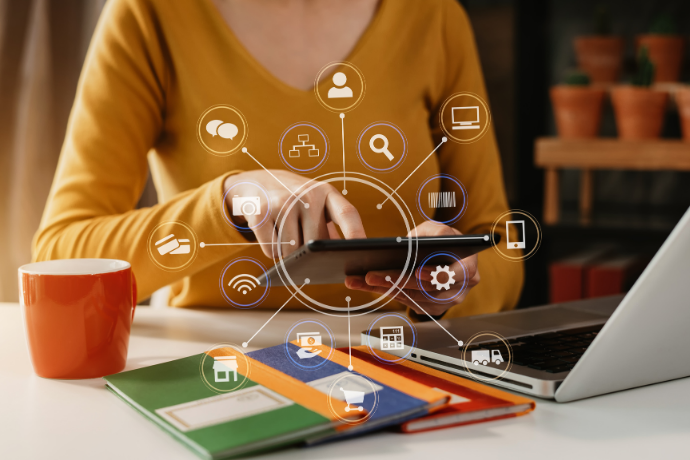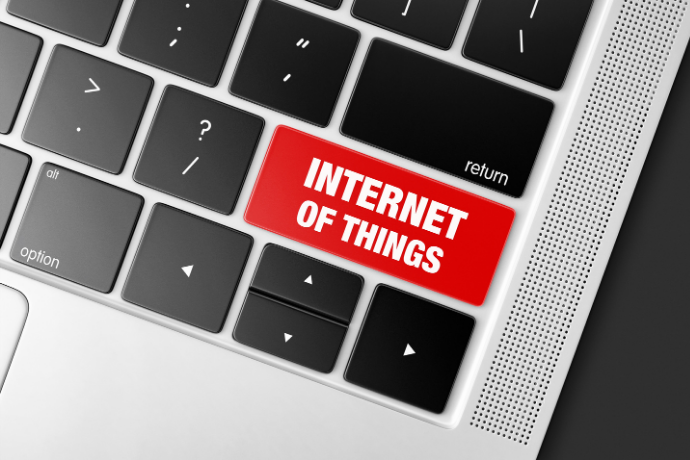 SPEAKERS
SPEAKERS
 TOPICS
TOPICS
Exploring IoT with expert insights: What it is, its components, examples, and more. Get ready to dive deep!

Our world is a hub of many wonders. The latest one is the Internet of Things, i.e., IoT.
But what is IoT, what does it mean, what does it constitute, and are there any tangible examples?
These are some of the questions we will answer today based on expert IoT speakers' knowledge. So, grab a pen and paper as you are about to learn everything about the Internet of Things.
The Internet of Things is a network of appliances, gadgets, and other items with sensors, software, and other technologies. Together, these gadgets function as a networked unit to gather and exchange data via the internet.
IoT allows simple everyday devices like cars and watches to become more automatable. For instance, IoT sensors embedded in cars can monitor engine performance, tire pressure, and other vital signs. Your smartwatch may alert you to seek medical treatment or slow down; suppose it picks up an abnormal heart rate.
The feedback you get from IoT devices prompts action. The Internet of Things streamlines:
The IoT’s meaning and application extend beyond the smartwatch and car. So, what else is on this list?
Here are some examples of IoT that you may have already encountered.

The Internet of Things isn't just connecting fancy gadgets; it's about creating a network that enhances lives. This section dives into the treasure trove of benefits unlocked by IoT, exploring its impact on various aspects of our world.
Let’s start with its convenience and comfort benefits:
Referring to all the examples of IoT we’ve looked at, it’s clear that there is an increase in convenience and comfort.
Smart homes help you get multiple tasks done at once. Like taking a shower as you make breakfast or initiating a washing cycle as you drive home. These save you time, increase convenience, and offer unmatched comfort.
In the industrial setting of automotive and production industries, IoT promotes staff and machinery safety.
If all the sensors monitoring moving machine parts don’t work correctly, they send the relevant data into the system. The moderators, engineers, and responsible personnel get this information and fix an issue before it becomes one.
Oiling and lubricating, removing worn-out parts, and fixing temperature-related issues are the actions an IoT may help solve. Another instance in which IoT can come to your rescue is monitoring gas leaks, which can cause fires or poisoning.
Numbers never lie!
With IoT, gathering raw data, analyzing it, and sorting it into useful information is easy. This analysis can help you make sound decisions to improve the system.
In a practical example, a doctor can get so much insight through the data collected on a wearable heart monitor. The monitor could highlight times the monitor picked up anomalies. Through that, they can further investigate with follow-up questions and advice accordingly.
The same applies to all industries using the Internet of Things.
Whether it is a product line in a food factory or traffic management in a smart city, IoT increases efficiency and productivity.
It ensures that the system is operating in its most optimized state. And suppose there is an issue, and it is fixed before it becomes a hindrance. Consequently, productivity is significantly enhanced.

While powerful, the interconnected world of IoT presents a unique set of challenges. We will unravel the complexities in detail. Some of those Internet of Things challenges are:
Some major issues are the high vulnerability to hacking, data privacy issues, and insecure communications. There is also a lack of transparency when users don’t have the scope of data collection and how it is used.
More big data networks like offices and factories also face higher incidences of cyber attacks that cripple the entire system. Unauthorized stalking and surveillance are also a danger to IoT applications.
Imagine the data capacity fitness software gets from wearable monitors!
It’s quite a lot.
This brings up two issues: storage and processing and data management.
The first can be expensive, and it constantly needs scalable upgrades. The latter highlights the need for sophisticated systems or well-organized personnel to sift through the alerts. Any issue with the data management opens up the systems to more security issues.
The unfortunate thing about most examples of IoT is that each may have its standardization protocols. Another issue is that the items you would love to have within a smart home network may need compatibility.
Different brand products may operate using differing systems, hindering smooth data transfer. This means they wouldn’t natively “talk” to each other, requiring additional hubs or workarounds to get them to work together.
This makes it more expensive.
As much as the human touch is invaluable, IoT has rendered data entry and other manufacturing and transport experts jobless.
All the tasks that these people handled before are now done by sensors, cameras, and other technology.
The Internet of Things, in all its glory, has and is changing how we interact with our world.
We can get tasks done simultaneously, saving time and money. It boosts productivity, promotes data-driven decisions, reduces factory and automotive calamities, and enhances comfort.
Conversely, we meet challenges like privacy and security, data storage and management, compatibility, and job displacement. Luckily, involving the right specialists can address these challenges head-on.
The Internet of Things continuously proves to be a force for positive change, enhancing our lives while creating a more secure and sustainable future for all.